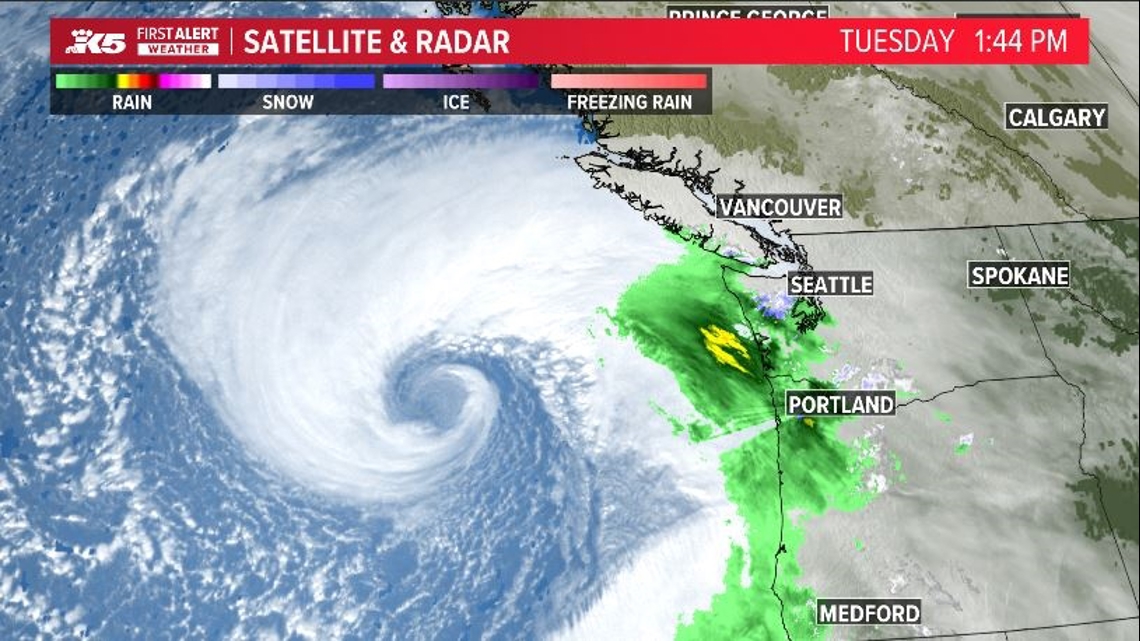
Over 215,000 Without Power as Bomb Cyclone Hits Washington
A powerful weather system known as a "bomb cyclone" brought severe winds, rain, and snow to western Washington, leaving over 215,000 residents without power as of Tuesday evening. This rare meteorological event has caused significant disruptions across the Pacific Northwest, with utility crews working around the clock to restore services.
Seattle City Light reported 71,736 outages, with Snohomish County PUD and Puget Sound Energy accounting for a combined 127,612 outages. Winds gusting up to 65 mph uprooted trees and downed power lines, creating dangerous conditions on the roads and in neighborhoods. Reports of gusts reaching 77 mph at Mount Rainier’s Sunrise and 55 mph at Seattle-Tacoma International Airport underscore the storm’s intensity. Emergency crews have responded to multiple incidents of trees falling onto buildings and vehicles, emphasizing the critical need to stay indoors and avoid unnecessary travel.
Also Read:- Lautaro Martínez Equals Maradona’s Goal Record, Inches Argentina Closer to World Cup
- Nike and Babolat Celebrate Rafael Nadal's Legendary Career
The National Weather Service issued high wind warnings for the Washington coast and lowlands near Bellevue, while areas closer to the Puget Sound faced a less severe wind advisory. Despite these measures, the storm's impact has been far-reaching, with widespread outages, blocked roads, and significant safety concerns.
A "bomb cyclone" refers to a midlatitude cyclone that intensifies rapidly when its central pressure drops by at least 24 millibars in 24 hours. This phenomenon occurs when cold and warm air masses collide, often resulting in extreme weather. The storm system, with pressure levels predicted to drop to 950 millibars, has already surpassed January’s bomb cyclone, which impacted Washington but spared it the worst effects seen in California.
Residents are urged to steer clear of downed power lines, which remain highly dangerous even when they appear inactive. Officials recommend staying at least 30 feet away and immediately reporting such hazards to utility companies or emergency services. For life-threatening situations involving power lines, calling 911 is essential.
As the storm progresses, meteorologists forecast ongoing challenges, including blizzard conditions in the Cascades. Preparation and vigilance remain key as western Washington braces for continued adverse weather.
Read More:

0 Comments